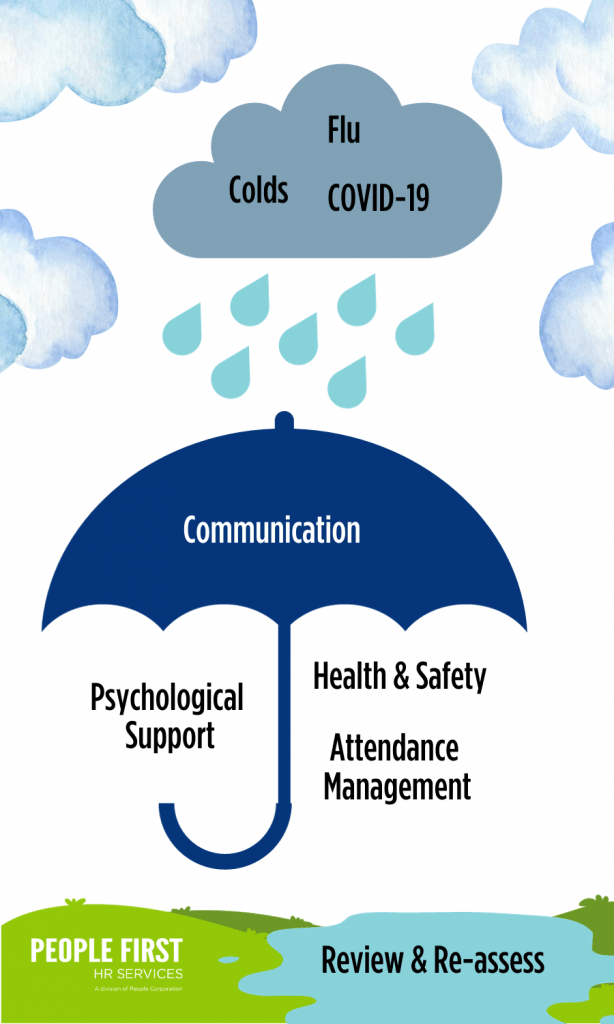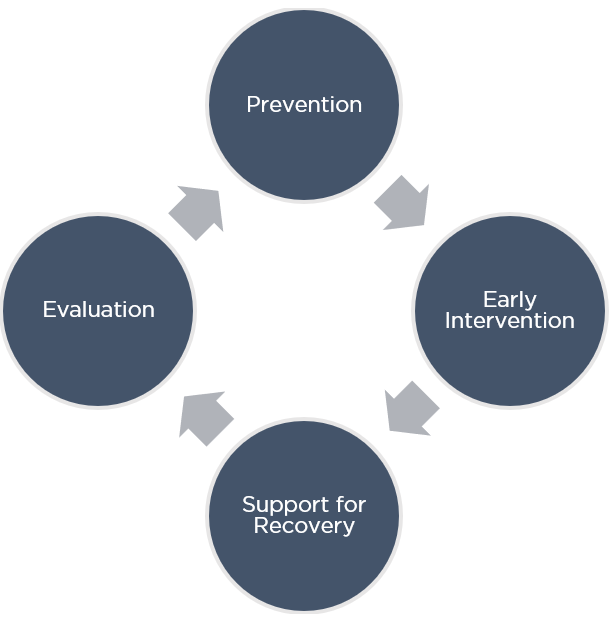By Brookley Susser, Senior Consultant, Strategic HR Consulting
We’ve heard the buzz about engagement; the ever-elusive concept of measuring employee satisfaction in the workplace… and here’s our hot take.
Commonly, engagement surveys or other forms of gathering employee feedback are based on a series of buzzword concepts that are believed to be the final word in creating and measuring employee engagement in an organization: compensation and total rewards, communication, corporate culture, professional development, and collaboration. Our research and extensive work with clients on engagement initiatives indicates that these factors can impact the employee experience and engagement levels, but it’s not the whole story.
What if we also seek to understand: do my employees feel embraced, valued, successful and committed while at work?
The concept of connectedness to brand is often practiced with consumers – how does our product, service or system make you feel when you use it, and why do you keep going back for more? The same process of seeking to understand can and should apply to creating or reinforcing the connectedness between our business and the employees that keep it running.
This engagement philosophy is centered on the ideal that engagement is the holistic connection people feel towards their workplace, and if this connection is strong, employees are more likely to contribute to the business in an impactful and enduring way.
Do we truly know how our employees feel when they come to work each day?
The talented leaders we partner with have vast experience in their fields, and many feel informed about the employee experience, whether that be through conducting surveys, maintaining an open-door policy, or providing various other opportunities to share feedback. However, no matter how collaborative senior leadership or HR is with the rest of the organization, there will always remain a proverbial gap between the individuals on those teams and other employees in the organization. What we find is that when those leaders conduct an engagement initiative through the lens of holistic connection, most are surprised with (at least some of) the results.
As businesses continue to evolve the way they work and explore modernized staffing models, understanding the employee experience remains a top focus. The unique intricacies of each organization and the individuals that work within them make it difficult to propose a one-size-fits -all formula to creating a positive employee experience. Employers that invest time and resources into gathering employee feedback about how they feel about their environment are a step ahead in creating meaningful impact in the engagement of their teams.
Our clients span sectors, industries, geographic locations, and size – although our recommendations may vary based on these factors, surveying employees to gain an understanding of current state is a foundational best practice essential to impacting engagement.
If you are new to exploring employee engagement, a survey may be a great place to start.
The most successful surveys balance the need to create a safe and accessible outlet for employees and ensuring value-add for the organization. Here are some things to think about when planning the next engagement initiative within your organization:
Consider Your Options
Organizations that have experienced a significant amount of change or have not completed a comprehensive measure of engagement in recent years may opt to begin with a pulse survey approach. A pulse survey is intended as a short ‘pulse’ check on the current environment to then inform next steps in a more detailed measure of engagement, or adjustments within the organization. Questions are typically general in nature and intend to capture key elements from the workplace environment.
An additional benefit to leveraging a pulse survey initially, is to manage employee expectations of receiving survey results. Best practice indicates that a summary of results and action plan to move forward should be provided to employees following a comprehensive engagement measure, however, this is less likely to be an expectation with a short and general survey of the environment.
More comprehensive measures of engagement can be particularly successful within workplaces that are in a place to provide constructive and meaningful feedback. Holistic surveys can provide the leadership team with all the information necessary to impact change within the environment and set a standard of excellence related to gathering employee perspectives.
Plan Ahead
Communicating along the way and encouraging buy-in at all levels is an important and sometimes overlooked step to ensuring a successful initiative.
- Be transparent about how responses will be collected, results will be compiled and how those will be shared within the organization.
- Encourage everyone to provide honest and constructive feedback to positively support organizational growth.
- Make sure leaders understand the benefits a survey will bring to the organization and their teams and encourage them to speak with their staff about participating.
Reflect on Intent and Impact
Many employers fall into the trap of asking questions about every facet of the work environment, resulting in a long and sometimes cumbersome survey experience for employees. A lot of questions also means a higher volume of results to review which can become overwhelming as leaders debrief and determine next steps in the organization.
When crafting survey questions, ask yourself:
- Does this question elicit a certain response? Or does it give an opportunity to provide honest and constructive feedback?
- Is this question specific enough to guide actions in the workplace based on the results?
- Is this question relevant to every employee’s experience, or is it best asked to a smaller subsection of the workplace? Alternatively, is there a way to ask that can readily apply to all?
Defining your intent and desired impact from an engagement initiative from the outset is crucial to ensuring value-add within the organization and return on investment.
Maximize your Reach
The feedback gathered can only hold true value if it is honest, and if it represents the diverse experiences of individuals within your workplace. We commonly hear of fear of reprisal related to surveys – which directly impacts the volume and truthfulness of responses.
Employees feel most safe sharing perspectives within an anonymous setting, which can easily be accomplished within an online survey format. Clearly communicating about the measures taken to ensure confidentiality and anonymity within responses can garner higher levels of confidence in the process. Many employers have maximized their reach by partnering with a third-party survey provider. This can further reinforce the principles of anonymity and confidentiality, and boost employee confidence in the process.
Managing Expectations
Expectations of organizations and the leaders that guide the way within them will continue to remain high. Employers can’t be everything for everyone – top employers tend to focus on how to maximize impact within the environment.
When we move intentionally through an engagement initiative, we also leave space for reflection following the survey to collaborate on the best ways to move forward, and positively impact the work environment in future. You can’t change everything all at once – focus on a few key areas that are realistic, no matter how small it may seem. Communicate your action plan, allocate resources to making meaningful changes, and remain engaged in the process to ensure employees feel that their input was and continues to be valued.
We are here to support.
No matter how you choose to explore engagement within your organization, we encourage you to lean into the process and embrace any change that may come from it.
At People First HR, exploring innovative solutions to influence the employee experience is our passion. If you’re seeking a trusted partner to support your next people and culture initiative, connect with us.




